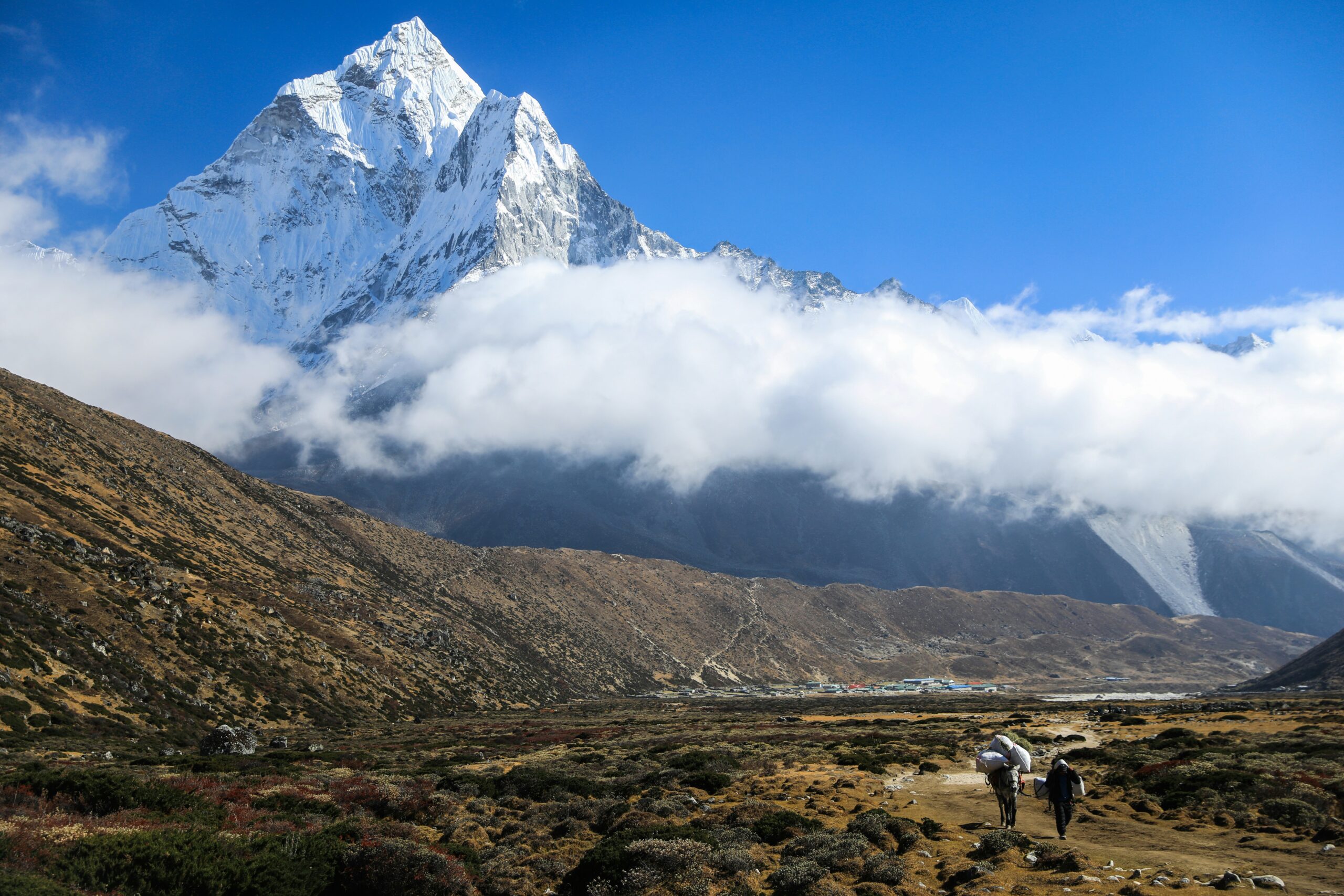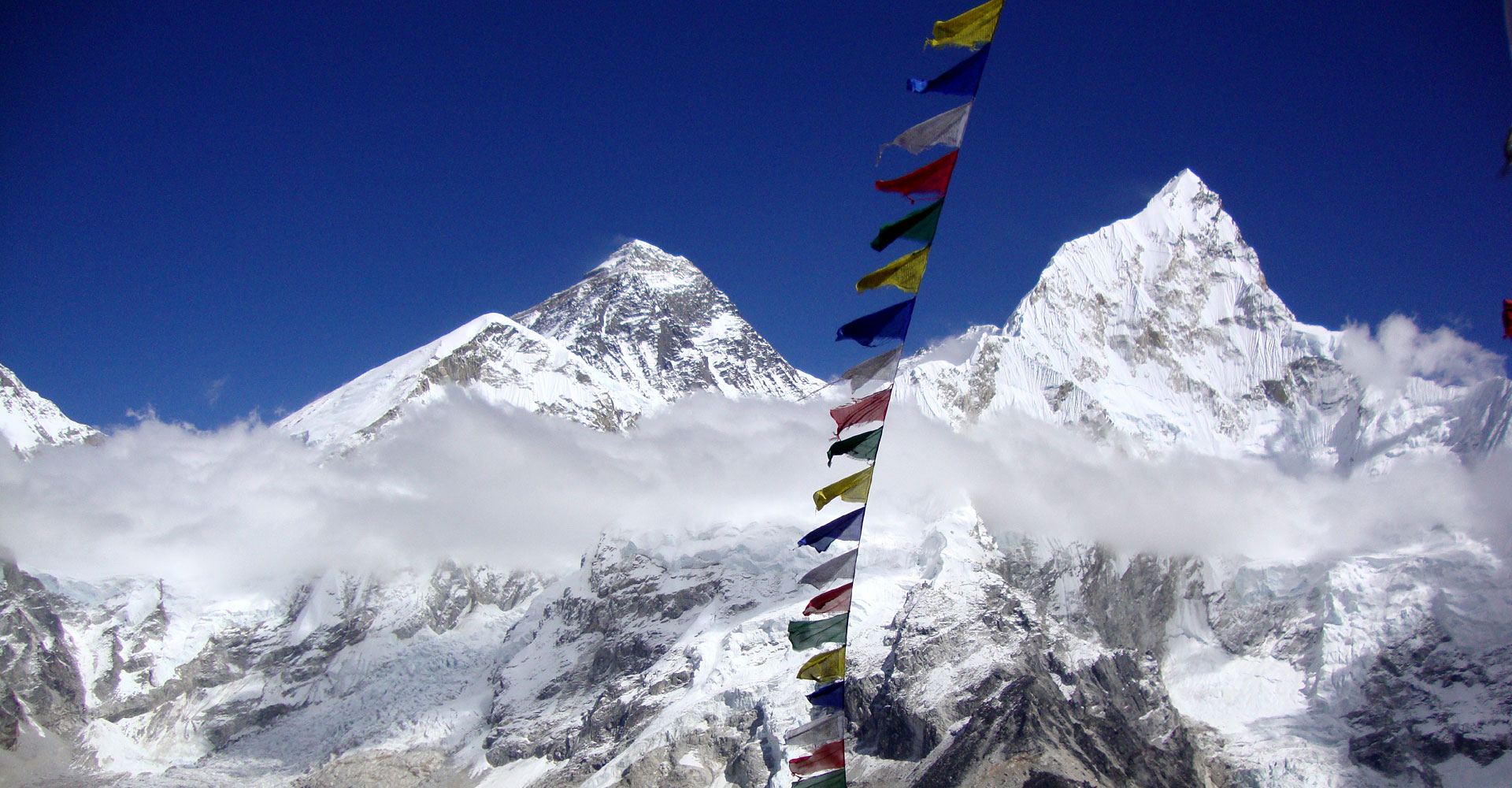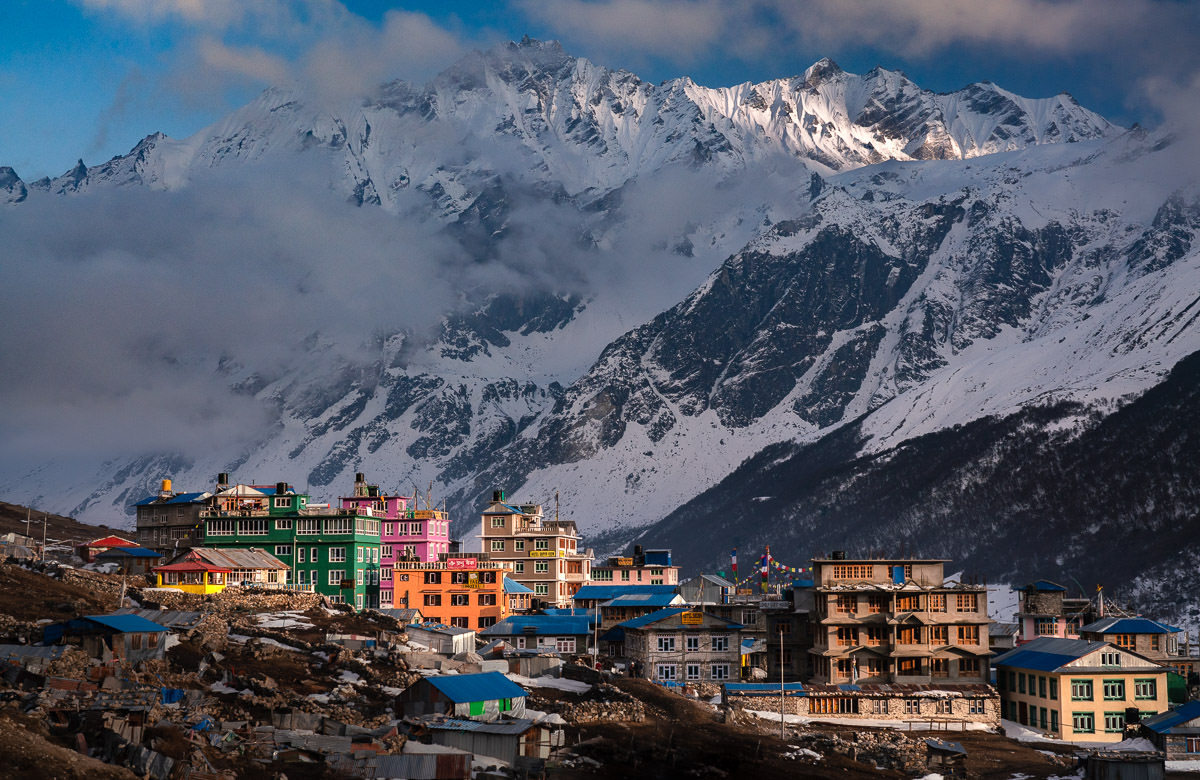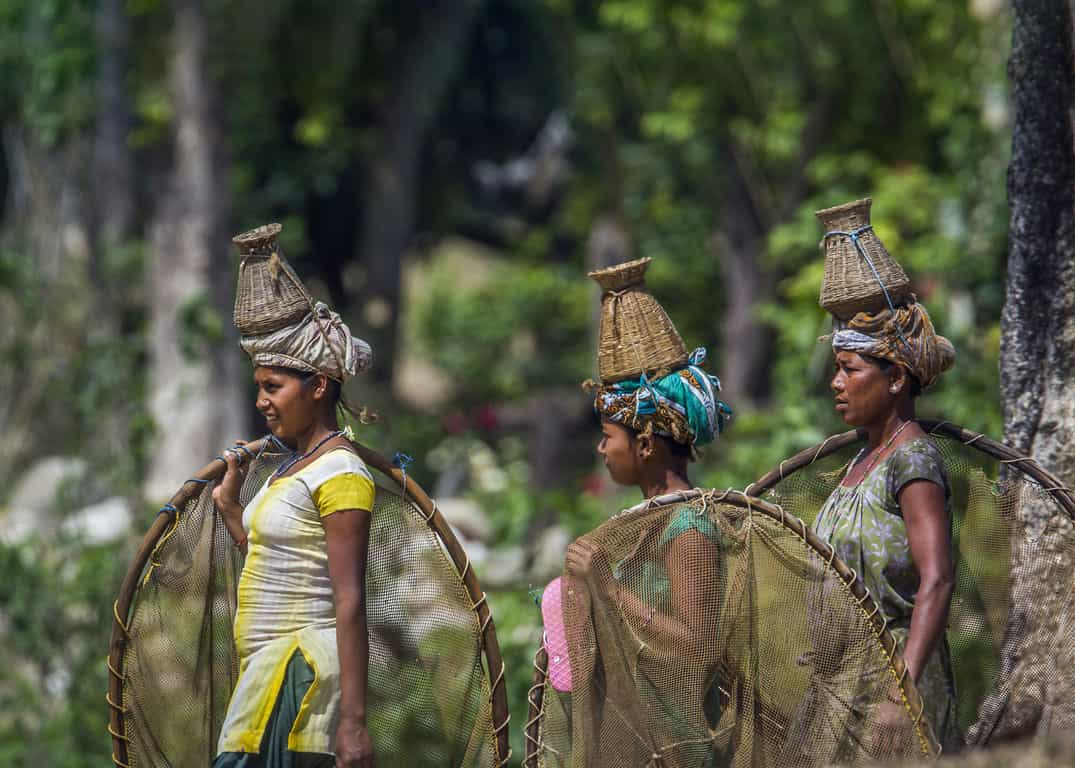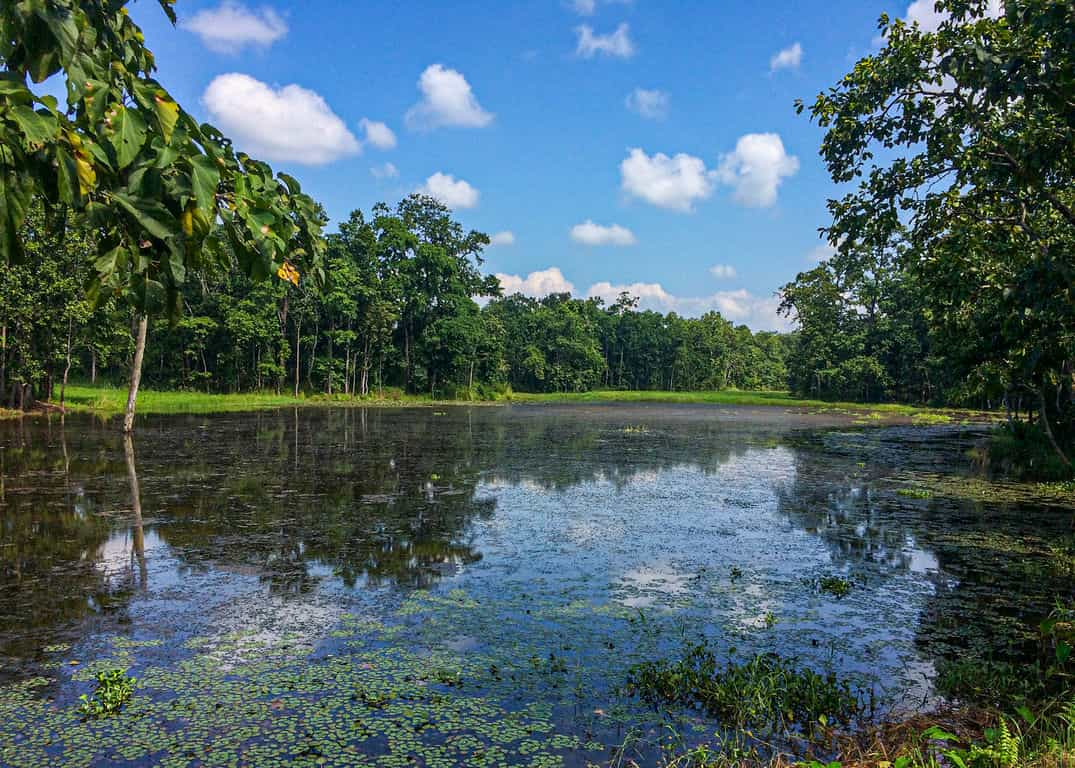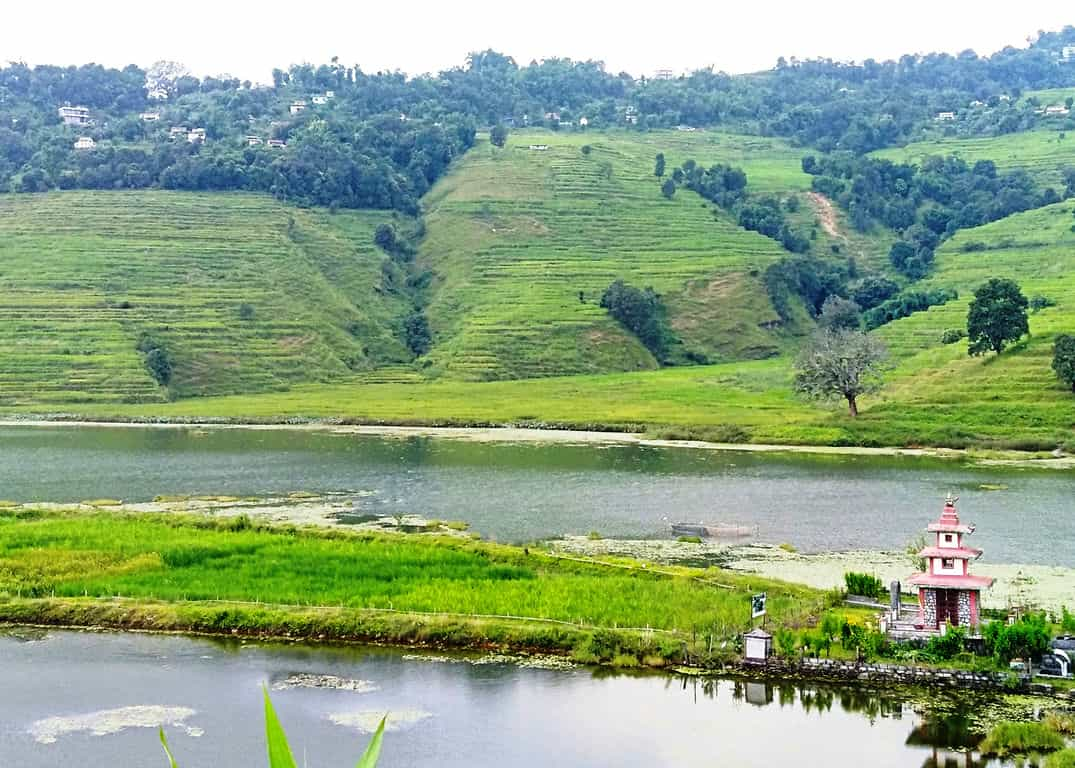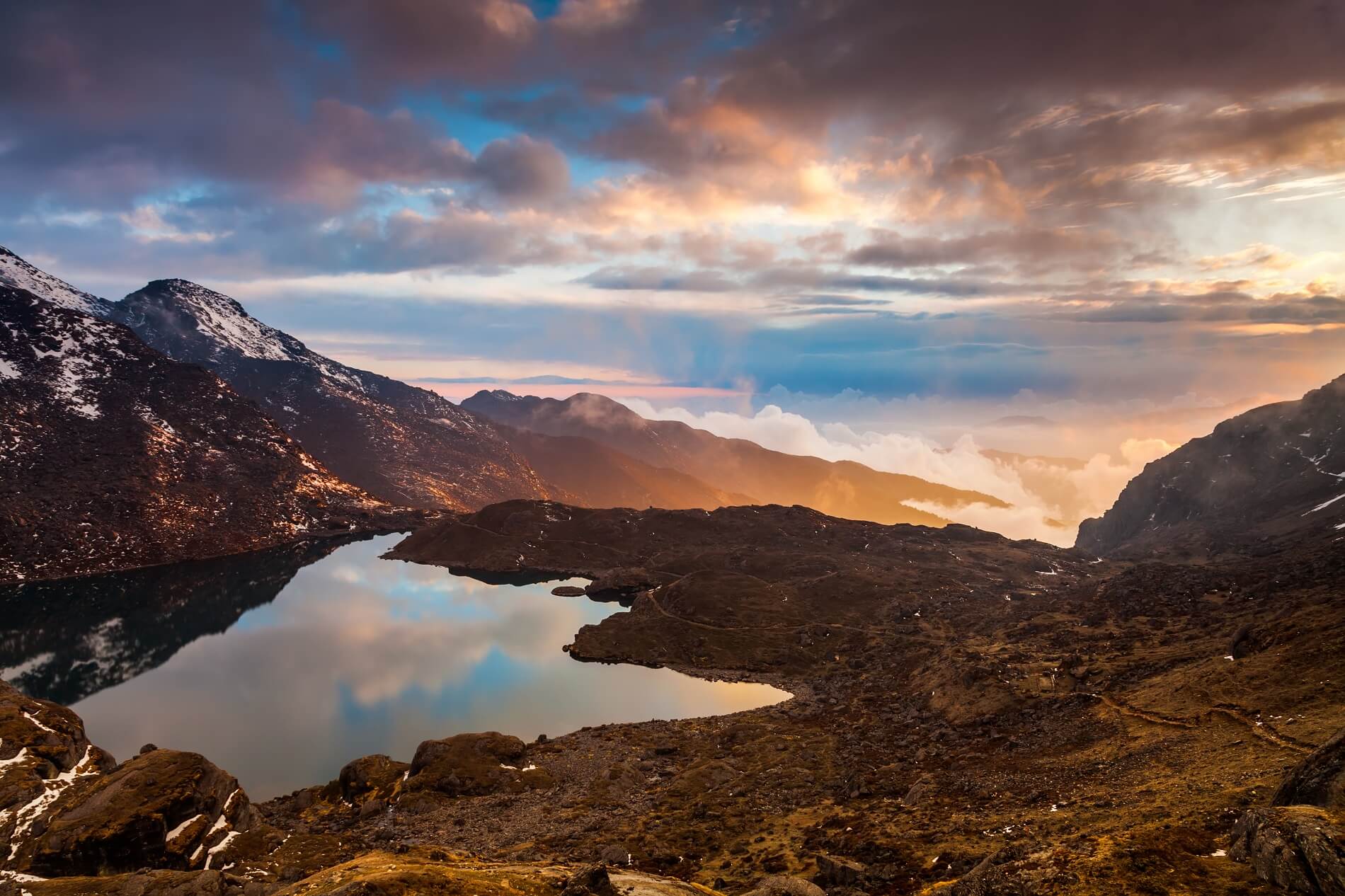A Seasonal Guide for Trekkers
The Everest Base Camp trek is the most popular trekking route in the world, attracting adventure seekers from all over the globe. The main attraction of this trek is the breathtaking view of Mount Everest, the world’s highest peak. The trek is a physical challenge, but it is also a treat to witness the Sherpas’ rich cultural heritage and the Khumbu Valley’s breathtaking beauty.
Choosing the best season is a major factor influencing the Everest Base Camp trek experience. Spring (March-May) and Autumn (September–November) are the two best seasons to go to Everest Base Camp. Both these seasons have suitable weather and clear skies, making it easy for trekkers to appreciate the picturesque view. The best season for trekking needs to be understood to ensure a secure and pleasant trek in this fantastic environment.
In short, when planning a trek, you must carefully consider the weather and your own experience as a trekker before choosing the most appropriate time for your Everest Base Camp trek. This should maximize the opportunity for your trip to be safe and enjoyable in this amazing destination.
Best Time for Everest Base Camp Trek: Key Factors to Consider
When planning a trek to Everest Base Camp, several factors must be considered in determining when to go. Weather conditions are one of the most critical factors to consider, involving temperature fluctuations, rainfall, and snowfall. The weather in Everest Base Camp varies greatly with the season, impacting trekking routes and overall safety.
The weather at Everest Base Camp is seasonal. Spring, from March to May, is usually moderate in temperature and has comparatively stable weather, making it one of the most popular seasons with trekkers. From September to November, autumn also has good trekking weather, but more unpredictable.
You must be aware of the high-altitude challenges at Everest Base Camp. As you gain elevation, the risk of altitude sickness increases, so understanding how the body adapts to altitude is crucial. During the winter months (December to February), heavy snowfall and extreme cold increase the Everest Base Camp trek difficulty. So, Proper preparation and awareness of the conditions are key to having a safe and enjoyable Everest Base Camp trek.
| Month | Weather Conditions | Trekking Suitability | Crowd |
| January | Extremely cold, heavy snowfall | Challenging | Low |
| February | Cold, occasional snow | Harsh conditions | Low |
| March | Cold mornings, clear skies | Ideal | Moderate |
| April | Mild days, clear views | Best | High |
| May | Warm days, occasional rain | Best | High |
| June | Heavy rain, cloudy, and landslides | Not Ideal | Low |
| July | Heavy rain, cloudy, landslides | Avoid | Very low |
| August | At the end of the monsoon, clearer skies | Poor | Very low |
| September | End of the monsoon, clearer skies | Ideal | Moderate |
| October | Clear skies, stable weather | Best | High |
| November | Dry, chilly nights, clear views | Excellent | High |
| December | Very cold, chances of snow | Possible | Low |
Monthly Weather, Trekking Suitability, and Crowd Levels for Everest Base Camp Trek.
Best Seasons for Everest Base Camp Trek: When to Go
The best time to trek to Everest Base Camp is in spring (March-May) and autumn (September–November). These seasons have clear skies, pleasant temperatures, and the best mountain views. In spring, the trails are colorful with blooming flowers, while autumn offers fresh air and stunning landscapes. Trekking in winter or the monsoon season is possible, but can be tough due to heavy snow or rain. Picking the right season makes the journey safer and more enjoyable.
Everest Base Camp Climate Chart: Month-by-Month Guide
Plan your trek with this detailed climate chart, covering temperatures, precipitation, and the best seasons for a successful Everest Base Camp adventure.
| Month | Average Temp (Day) | Average Temp (Night) |
| Jan | -10°C to -5°C (14°F to 23°F) | -20°C to -15°C (-4°F to 5°F) |
| Feb | 8°C to -2°C (18°F to 28°F) | -18°C to -12°C (0°F to 10°F) |
| Mar | -6°C to 2°C (21°F to 36°F) | -15°C to -8°C (5°F to 18°F) |
| Apr | -2°C to 5°C (28°F to 41°F) | -10°C to -5°C (14°F to 23°F) |
| May | 0°C to 8°C (32°F to 46°F) | -5°C to 0°C (23°F to 32°F) |
| Jun | 2°C to 10°C (36°F to 50°F) | 0°C to 3°C (32°F to 37°F) |
| Jul | 4°C to 12°C (39°F to 54°F) | 2°C to 5°C (36°F to 41°F) |
| Aug | 3°C to 11°C (37°F to 52°F) | 1°C to 4°C (34°F to 39°F) |
| Sep | 1°C to 7°C (34°F to 45°F) | -3°C to 1°C (27°F to 34°F) |
| Oct | -3°C to 5°C (27°F to 41°F) | -8°C to -3°C (18°F to 27°F) |
| Nov | -6°C to 2°C (21°F to 36°F) | -15°C to -8°C (5°F to 18°F) |
| Dec | -8°C to -3°C (18°F to 27°F) | -18°C to -12°C (0°F to 10°F) |

1. Autumn (September to November)
The autumn season, specifically September to November, is considered the best time for the Everest Base Camp Trek. During this season, the trekkers can enjoy perfect weather with a clear sky and comfortable temperatures ranging from 5°C to 15°C (41°F to 59°F) during the day and dropping to -5°C to -15°C (23°F to 5°F) at night. The post-monsoon scenery is lush and colorful, with the most stunning views of the surrounding mountains.
Besides the perfect weather and warm welcome, autumn also brings a picturesque change in nature. The monsoon’s lush green hills slowly turn golden, and the scenery becomes serene and beautiful. Under clear blue skies and snow-capped mountains, every step is a feast for the eyes. If you plan an autumn Everest trek, this is the perfect time to get the most out of your experience.
2. Spring (March to May)
The best seasons for trekking to Everest Base Camp are primarily spring and autumn, with spring (March to May) being extremely appropriate. You can expect favorable weather conditions during this time, which makes the trek more comfortable. The daytime temperature typically ranges from5°C to 20°C (41°F to 68°F), allowing for enjoyable trekking experiences. Night temperatures, though, get very low, typically ranging between -5°C and -15°C (23°F to 5°F), so you must use appropriate gear to keep yourself warm.
Spring also has the advantage of fewer crowds compared to the autumn season, allowing you to have a more serene experience. The major attractions of the spring Everest trek include the breathtaking landscape and natural beauty of the region. Thus, if you are planning an Everest trek, spring is the best time to go to the Everest Base Camp.
3. Winter (December to February)
The winter Everest trek is a peaceful but challenging experience in the beautiful snowcap landscapes. The temperatures between December and February are quite low, with daytime temperatures varying from -10 °C to 10°C (14°F to 50°F) at lower altitudes and -15°C to -25°C (5°F to -13°F) at higher altitudes, for which you will need warm gear.
Fewer trekkers on the Everest Base Camp trail in winter mean a peaceful and quiet journey, allowing you to fully enjoy the stunning mountain scenery. The clear winter skies offer some of the best views, making every step worthwhile. However, some parts of the trail can be icy and slippery, so wearing the right gear is essential. Also, accommodations in Lukla, Namche Bazaar, and higher villages may be limited, so it’s important to plan and be well-prepared for the adventure.
4. Summer/Monsoon (June to August)
The monsoon season, between June and August, is not recommended for trekking to Everest since it rains heavily, and the trails are slippery, with a higher chance of landslides. Everest monsoon trekking implies wet conditions, and therefore, trekkers can anticipate a more challenging adventure.
Temperatures at lower altitudes are typically between 5°C to 25°C (41°F to 77°F) during the day, while night temperatures range from 0°C to 5°C (32°F to 41°F) at higher altitudes. If you plan to trek in the summer, make sure to pack waterproof equipment, including jackets, trousers, and shoes, and dry bags to keep your gear dry in case of rain.
Everest Base Camp Climate: Monthly Temperature & Rainfall Trends
When planning your trek to Everest Base Camp (EBC), it’s important to know the weather patterns. Winter (December–February) brings freezing temperatures and dry conditions, while spring (March- May) offers mild weather and clear skies, making it the best time to trek. The monsoon season (June–September) has heavy rain, making the trails slippery and less ideal for trekking. Autumn (October–November) provides stable weather, clear views, and comfortable temperatures, making it another great time for the journey. Understanding these seasons will help you choose the best time for a safe and enjoyable trek.

Average monthly temperature and rainfall at Everest Base Camp
Pros and Cons of Trekking in Each Season
When it comes to Everest Base Camp trekking, each season offers unique advantages and challenges. Understanding each season’s Everest Base Camp trekking pros and cons can help you decide the best time for your adventure. Here’s a detailed breakdown:
1. Autumn (September to November)
Pros:
- Autumn is the best time to visit Everest Base Camp, thanks to its perfect weather—clear skies and mild temperatures.
- Trails are well-maintained, and most teahouses and lodges are open and ready to serve trekkers.
- With fewer clouds and clear skies, you’ll experience the best mountain views, making it an ideal time for breathtaking photographs.
Cons:
- As the most popular trekking season, it can get crowded, especially at Everest Base Camp and along the trail.
- The busy nature of this season means you may need to book your teahouse in advance to avoid shortages of rooms or supplies.
2. Spring (March to May)
Pros:
- Spring offers mild temperatures, long days, and generally clear weather, making it a great time for a spring Everest trek
- Compared to autumn, there are fewer crowds, allowing you to enjoy a more relaxed trek with ample space on the trails.
- Spring also brings vibrant rhododendron flowers, adding a splash of color to the landscape and making the trek visually stunning.
Cons:
- As the most popular trekking season, it can get crowded, especially at Everest Base Camp and along the trail.
- The busy nature of this season means you may need to book your teahouse in advance to avoid shortages of rooms or supplies.
3. Winter (December to February)
Pros:
- The winter Everest trek offers peace, with fewer trekkers on the trail, making it ideal for those seeking solitude.
- The clear skies in winter provide stunning views of the mountains, often more impressive than during other seasons.
- If you enjoy winter landscapes, the snow-covered terrain offers a unique and serene experience.
Cons:
- The heavy rainfall can make trails slippery and increase the risk of landslides, especially in the lower regions.
- Poor visibility due to frequent clouds and rain reduces the chances of clear mountain views, a significant downside for trekkers hoping to see Everest in all its glory.
- Daytime temperatures at lower elevations are warmer (around 15°C to 20°C/59°F to 68°F), but nights at higher altitudes can still dip below freezing, and the risk of wet gear and clothing is higher.

4. Summer/Monsoon (June to August)
Pros:
- Monsoon trekking in the Everest during summer means you’ll experience fewer trekkers, offering a more private and tranquil trek.
- The lush green landscapes and blooming flora during the rainy season create a beautiful, vibrant environment.
Cons:
- The heavy rainfall can make trails slippery and increase the risk of landslides, especially in the lower regions.
- Poor visibility due to frequent clouds and rain reduces the chances of clear mountain views, a significant downside for trekkers hoping to see Everest in all its glory.
- ·Daytime temperatures at lower elevations are warmer (around 15°C to 20°C/59°F to 68°F), but nights at higher altitudes can still dip below freezing, and the risk of wet gear and clothing is higher.
Choosing the best time to go to Everest Base Camp depends on your preferences, whether you’re seeking perfect weather, fewer crowds, or a more peaceful experience. Each season comes with its own set of advantages and challenges, so it’s essential to plan accordingly based on the trek you’re after.
Everest Base Camp Trek: Seasonal Preparation Guide
If you are planning a trip to the Everest Base Camp, you should know what kind of weather each season brings. Whether you want to trek during the warm spring or year-round icy fit for winter expeditions, you have to learn how to prepare for the Everest Base Camp trek about proper packing and ways to keep yourself safe to ensure a wonderful journey. Here’s how you prepare to trek in different seasons:
1. Autumn (September to November)
Everest Base Camp Packing List:
- Lightweight layer: A light layer is a must-have for the fall season. Due to temperature variations, one should pack long-sleeved shirts, light jackets, and a warm fleece for chilly nights.
- Windproof outer: Autumn weather can be quite windy in high altitudes; it is necessary to have at least one windproof outer layer with you.
- Comfortable trekking boots: Because of the season, the trails are likely to be very crowded, and leg-friendly footwear is needed for comfort and security.
- Sunscreen and sunglasses: Less coverage means more exposure to the sun; therefore, the skin and eyes have to be protected.
Health and Safety Tips
- Keep drinking to keep your energy up and altitude sickness away.
- Consider bringing along a small first-aid kit containing medications for pain relief, blister treatment, and anything prescribed for you.
- Avoid altitude sickness by taking your time so that your body can acclimate to the altitude.
2. Spring (March to May)
Everest Base Camp Packing List:
- Layered clothing: Pack light and breathable base layers for the day and warmer layers for the evening when the temperatures drop.
- Waterproof jacket: The spring season is usually milder, but this doesn’t mean it won’t rain at times, so make sure that your jacket is waterproof.
- Trekking poles: The trails can be a bit more technical with some mud sometimes, so trekking poles are really helpful to provide stability.
- Hat and gloves: Even if temperatures are mild, it is required that you have a hat and gloves for protection from high altitudes.

Health and Safety Tips
- Make sure to take frequent breaks to avoid altitude sickness as you ascend to higher altitudes.
- Pack snacks high in energy (nuts, energy bars) for fuel during long trekking hours.
- Always have sufficient water to avoid dehydration. The dry air in higher altitudes can lead to quicker fluid loss.
3. Winter (December to February)
Everest Base Camp Packing List:
- Thermal layers: Trekking in winter requires warm thermal layers and insulated clothing. Without a good base layer, fleece, or heavy-duty winter jacket, you are not prepared.
- Gaiters and crampon-compatible boots: Winter trekking means snow, ice, and slippery paths. A boot compatible with crampons and gaiters is essential for grip and protection.
- Sleeping bag rated for extreme cold: At night, it can get cold, so take along a sleeping bag rated for -20°C to -30°C (-4°F to -22°F).
- Headlamp and extra batteries: The days are shorter in winter; thus, an early sunset demands that you get a headlamp.
Health and Safety Tips:
- The thing about trekking in winter is that it is cold, so make sure you are fully prepared to avoid frostbite and hypothermia.
- Add some extra food and fuel, as the higher-altitude teahouses may not have too much variety.
- Layering is key to ensuring warmth without overheating. Adjust layers as needed to regulate body temperature.
4. Summer/Monsoon (June to August)
Everest Base Camp Packing List:
- Waterproof gear: Make sure you pack waterproof jackets, pants, raincoats, and boots to protect yourself from constant rain.
- Mosquito repellent: The monsoon season increases humidity and the presence of mosquitoes, so don’t forget repellent.
- Quick-dry clothing: Since you’ll encounter wet conditions, quick-dry clothes are essential to prevent discomfort.
- Dry bags: To protect your electronics and important gear from getting wet, use dry bags for your valuables.
Health and Safety Tips:
- Antifungal creams and antiseptic ointment packs deal with the irritation and infection caused by wet conditions.
- Due to the risk of landslides and slippery trails, always walk with caution, especially after heavy rain.
- Ensure you have a water purification system (filter or tablets) to avoid drinking contaminated water in wet conditions.
No matter the season, proper gear for the Everest Base Camp trek is crucial for a safe and successful journey. Each season requires a specific packing list for Everest Base Camp to ensure comfort and protection against varying weather conditions. Whether you’re trekking in mild spring or harsh winter, being well-prepared is the key to having a safe and enjoyable adventure. Remember, the better you plan, the better your trek will be!

Final Thoughts
Choosing the best season depends on your trekking choice. If you want good weather and clear conditions, autumn (Sep–Nov) and spring (Mar- May) are the best seasons with reliable weather and great visibility, though they are peak seasons.
A winter Everest trek (Dec–Feb) offers stunning views but requires preparation for freezing temperatures and icy trails. Monsoon trekking (Jun–Aug) is the least recommended due to heavy rain and slippery trails, though the landscape is lush and serene. Ultimately, the ideal time for an Everest trek depends on whether you prefer good weather, solitude, or adventure. With proper preparation, any season can offer an unforgettable journey.
The best time to visit Everest Base Camp depends on the season, and this guide will help you decide when to go. However, planning the entire trip on your own can be stressful—there’s a lot to arrange, from permits to routes and accommodations. With Asian Heritage Treks and Travels, you’ll have expert guidance, seamless logistics, and a trek tailored to your preferences. Let us handle the details while you focus on the adventure. Plan Your Everest Base Camp Trek with Us.





